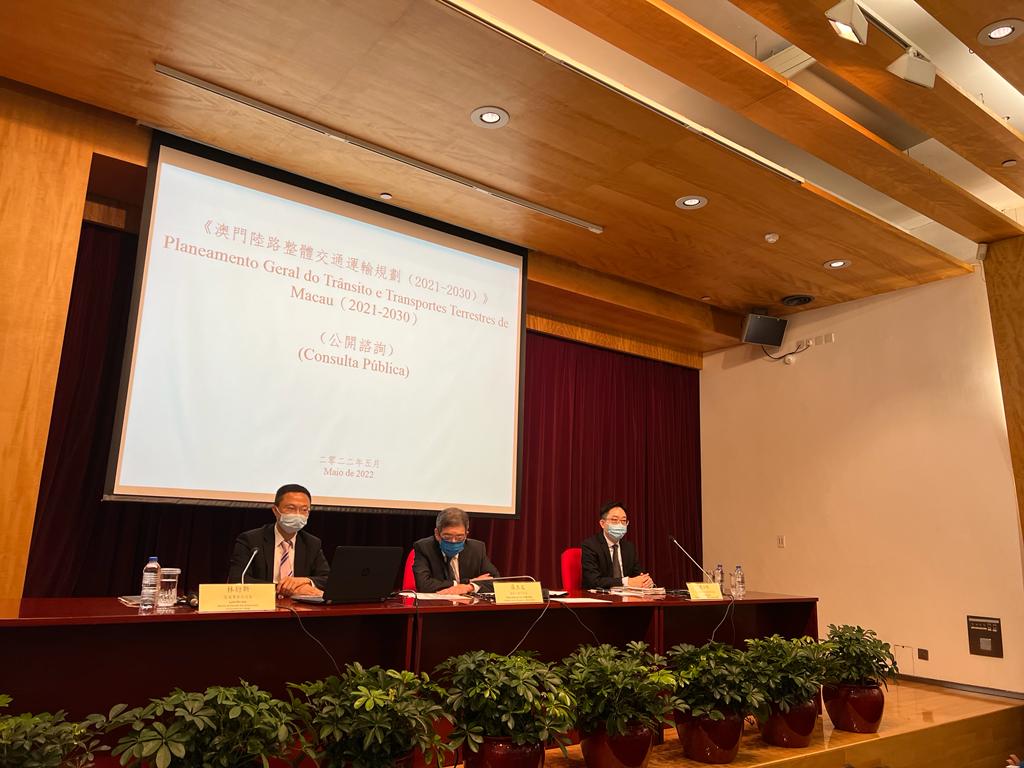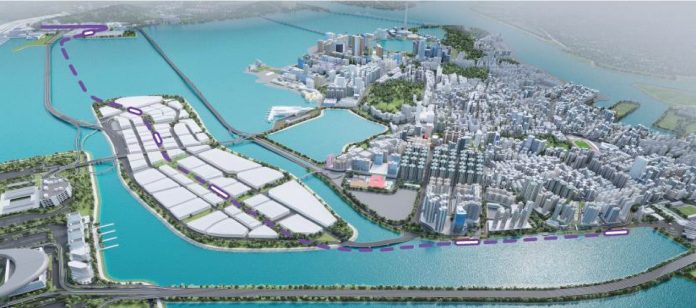The SAR government will complete the construction of the east line of the Macau light railway by 2028, and conduct research on building the west line to form an inter-connected transportation network, the Director of the Transport Bureau (DSAT), Lam Hin San, said today (Monday).
The information was provided during a presentation session for members of the Legislative Assembly (AL) in which the details of the proposed 2021-2030 General Planning for Traffic and Land Transport of Macau.
According to the plan, Macau will focus on developing the construction of an urban railway transit network in the next 10 years to build an “environmental-friendly and efficient” transportation system, and learn from the experiences of other cities with high population and travel densities such as Chongqing, Hong Kong and Singapore.
By 2028, the SAR government will complete the construction of the light railway east line – starting from the border gate, via the New Area Zone A to the Taipa Ferry Terminal – and by the time it completes construction, the mileage of the Macau light railway will reach around 24 kilometers, with the operating railway length per capita to be increased from the current 0.14 km/10,000 to 0.3 km/10,000.
The DSAT will also study the plan for construction of the west line of the light railway, and if the west line from Barra to the border gate finishes construction, the length of the light railway network will be increased by 6 kilometers, covering some 250,000 residents, with daily passenger volume estimated to reach around 242,000.
Meanwhile, if the west line from the border gate to the Lam Mau Tong section finishes construction, the length of the light railway network will increase by 2.2 kilometers, with daily passenger volume estimated to be increased to 188,000.
The construction of the Barra Extension of the light railway will be completed by 2024, while the Seac Pai Wan Extension and the Hengqin Line will be completed by 2025, the DSAT director indicated.

According to the 10-year plan, transfer between the light railway and buses will be made easier by adjusting bus routes and frequency, while shortening the distance between bus stops and light rail stations.
Meanwhile, Lam indicated that a “three-dimensional” transformation will be conducted, adding more pedestrian tunnels and bridges to separate people and vehicles.
Some 10 kilometers of new pedestrian passages are planned to be constructed, including the Guia Hill walkway and Northeast Avenue walkway.
The planned Northeast Avenue pedestrian walkway will connect the Montanha Russa Park and Areia Preta Urban Park, covering around 99,000 citizens, with the follow-up extension reaching to the east line of the light railway.
Future research will be conducted on building the pedestrian bridge at Patane North St. and a pedestrian system of Cotai strip, Lam indicated during the public consultation section.
The DSAT will also plan to build a walkway network on Cotai and Macau New Urban Zone, connecting the tourism spots, casinos and hotels.
Meanwhile, the SAR government will speed up the promotion of electric vehicles, and increase the proportion of electric public buses to over 90 per cent by 2025.
Starting from 2022, all new car purchases by government departments will be restricted to only electric vehicles, the DSAT director stressed.
According to the plan, more charging facilities will be built, with tax and parking fee preferential policies to be implemented for electric vehicles.
The government will promote “green travel”, and control the annual growth rate of motor vehicles to no more than 3 per cent.
A cross-sea cable car to connect the Macau New Urban Zone and the Macau Science Center may also be built in the future, as a supporting transportation facility and tourist attraction.




















